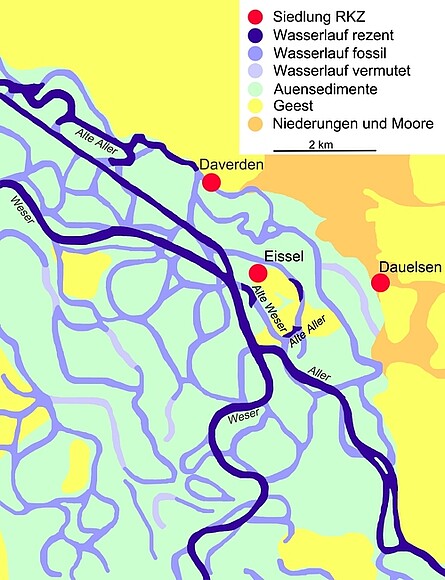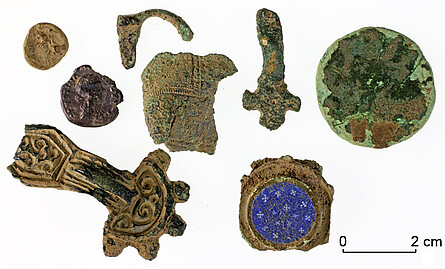Roman Iron Age Boat Landing Sites at the Mouth of the River Aller
Interdisciplinary research carried out over the past decade has demonstrated that Roman Iron Age structures of communication and exchange in the Northwest German coastal region were far more complex than had previously been thought. While it had traditionally been assumed that settlement sites in the immediate vicinity of the coast were the centres for the interregional exchange of trade goods, with finds assemblages characterised by numerous items of Roman origin, research in recent years has concentrated upon the riverine systems of the Ems and Weser. The starting point for this research is the large number of metal-detected finds recovered from the river- and salt marshes, which is studied in conjunction with geological and pedological data as well as information from historical maps in order to gain information on boat landing sites, hubs and riverside markets along with their social significance.
On this basis, the project – abbreviated to “Landeplätze-Aller-Projekt “ and supported by the Lower Saxony Ministry for Science and Culture (MWK) within the scope of the funding programme Pro*Niedersachen – intends to study the economic and social structures prevalent at the confluence of the rivers Aller and Weser in the environs of Verden during the first half of the 1st millennium AD. Employed as the project researcher, Imke Brandt M.A. intends to reconstruct the landscape on both sides of the river during the first half of the 1st millennium AD with a methodology including soil science and landscape archaeology, while at the same time conducting a systematic analysis of the finds assemblages which had been recovered during sondages of riverside find-spots in this area. The finds recovered during the course of the metal-detector surveys is currently being analysed by Iris Aufderhaar M.A. regarding their function, data range and manufacture. Further information is available here.
Bibliography
Siegmüller, A.; Precht, J.; Jöns, H. 2015: Römisch-kaiserzeitliche Bootslandplätze im Bereich der Allermündung. Siedlungs- und Küstenforschung im südlichen Nordseegebiet 38.


